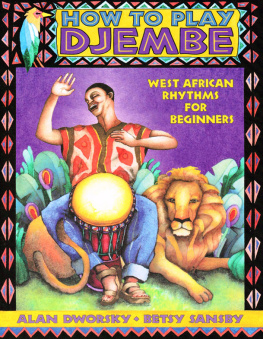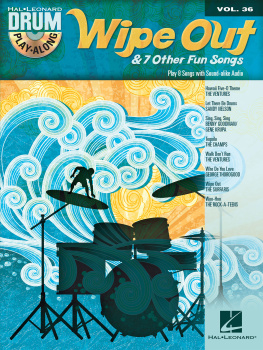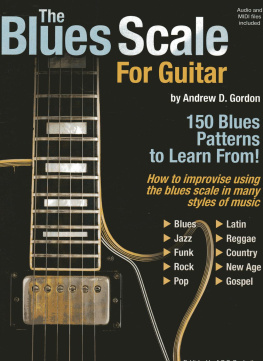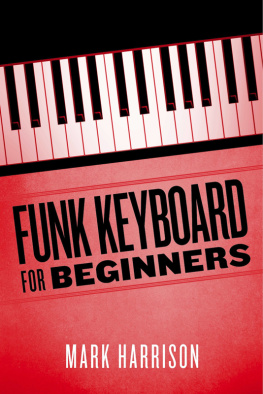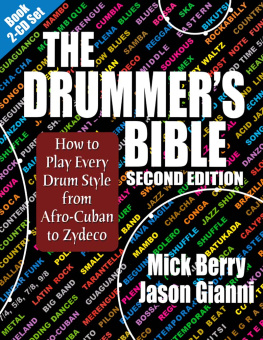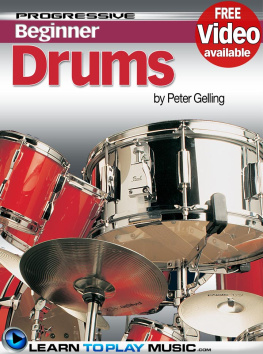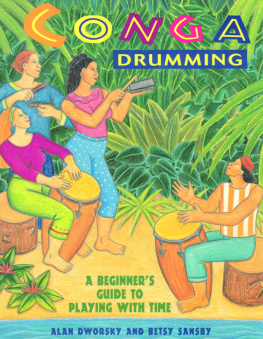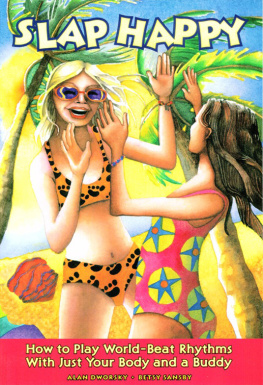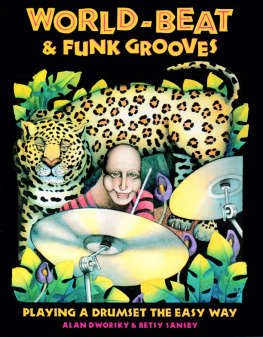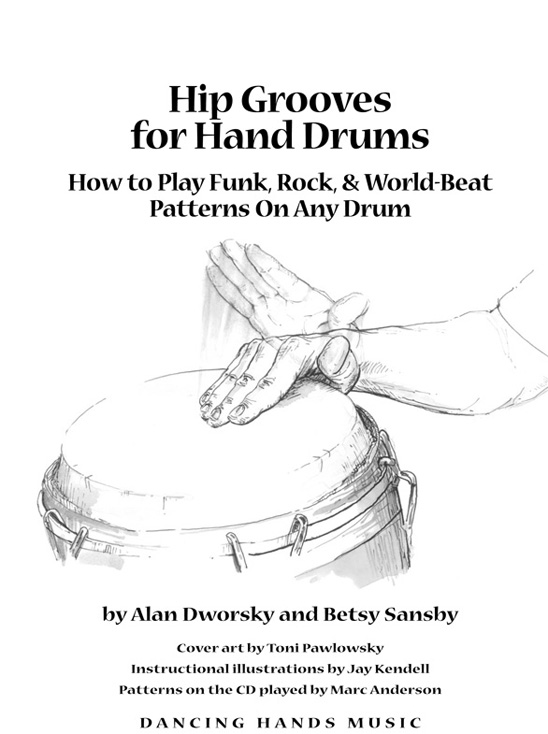
Important Notice
The print version of this book comes with an audio CD that contains recordings of all the drum patterns. If you would like to order the CD as downloadable audio files, go to www.dancinghands.com.
If you would like to see how every pattern is played, a DVD of all the patterns and downloadable video files are also available at www.dancinghands.com.
At the end of this ebook, youll find information about other instructional books and videos for hand drummers available from Dancing Hands Music. These include the Gentle Djembe for Beginners video series, as well as the videos Bongo Grooves for Beginners and Cajon Grooves for Beginners.
Hip Grooves for Hand Drums - How to Play Funk, Rock, & World-Beat Patterns on Any Drum
Copyright 2001 by Alan Dworsky and Betsy Sansby
All rights reserved. No part of this book may be used or reproduced by any means without permission except the blank charts on pages 86 through 91.
Published by
D ANCING H ANDS M USIC
4275 Churchill Circle
Minnetonka, MN, 55345
phone or fax: 952-933-0781
dancinghands.com
Book design and layout by MacLean & Tuminelly
Cover art by Toni Pawlowsky
Illustrations by Jay Kendell except for the illustration on page 83 by Robert Jackson
Patterns on the CD played by Marc Anderson, marcanderson.com
Printed in the United States of America with soy ink on recycled, acid-free paper by Banta ISG (Viking Press)
ISBN: 0-9638801-5-2 ISBN OF EBOOK VERSION: 978-0-9857398-2-9
To Barb and Jim, our best friends
TABLE OF CONTENTS
CHAPTER 1
Who this book is for and how it works
Y ou dont need a drumset to lay down a groove. All you need is one drum. It can be a djembe, a conga, or anything else you can get both your hands on. Whether your goal is to play in a band, jam in the park, or just drum along with your favorite CDs, this book will show you how, step by step.
There are no boring exercises in this book, just great dance grooves. Many of them are adapted from drumset patterns used in rock, pop, and funk music. Others are based on traditional African or Afro- Cuban rhythms. You can play all these grooves in a wide variety of musical styles and settings. And you can hear how each one sounds on the CD that comes with the book.
If youve never played a hand drum before, thats okay. Well show you how to make all the basic strokes on a djembe or a conga in the very first lesson. These same techniques can be applied to almost any hand drum. We use life-like illustrations to show how each stroke looks from the outside and give detailed descriptions to explain how each stroke feels from the inside.
If youve never read music before, thats okay too. We use simple box charts that even non-musicians find easy to understand. And we dont just dump a pile of charts on you and split. Well be with you every step of the way, anticipating your questions, pointing out whatever is most important, and explaining whatever we think will make your journey easier.
The book is organized into eleven lessons arranged roughly in order of difficulty. Within each lesson, the patterns start simple and gradually get more complex. But youll hardly notice it, because we make sure you get the right-size steps, in the right order, at just the right time.Weve done everything else we could to make this book as user- friendly as possible. Whenever we introduce a new Playing Principle or Practice Principle, we highlight it in the margin for easy reference. Whenever we introduce a new term, we print it in bold letters, define it on the spot, and toss it in the Glossary. Whenever we introduce a new musical concept, we separate it and explain it in a Musical Time Out. At the back of the book youll find blank charts you can photocopy and use for writing down new patterns. And on the CD weve recorded one pattern from every lesson for a full two minutes so you can play along.
On the next page, we explain how to read the charts and work with the CD. After that, we get right down to business. So turn off the ringer on your phone, grab your drum, and lets get started.
CHAPTER 2
How to read the charts and work with the CD
Heres a sample chart:
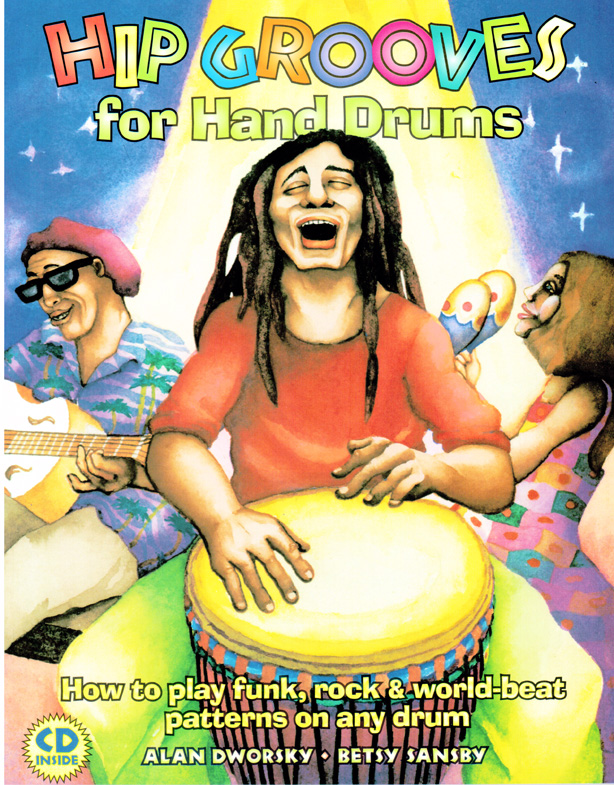
Box charts like these are the simplest charts for notating drum rhythms. Time moves from left to right and each vertical column shows whats happening on a single beat. Each of the three horizontal rows gives you a different kind of information.
The top row - or count row - tells you how to count a rhythm. The symbol + stands for and. The shaded boxes on the count row indicate the pulse, which well explain in .
The middle row tells you when and how to hit the drum. If theres a symbol in a box, you hit the drum on that beat with the stroke indicated by the symbol. For example, in the chart above, theres an asterisk in the box under beat 1. The asterisk is the symbol for the bass stroke, so you play a bass stroke on beat 1.
Here are all the symbols for how to hit the drum:
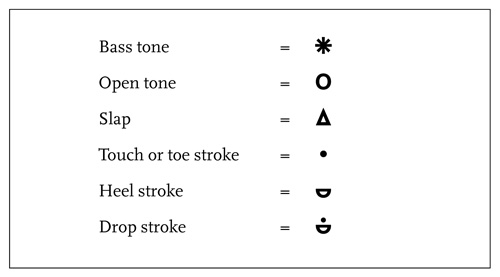
The bottom row on the chart tells you which hand to use. Although youll be using both hands on all the patterns, most of them start with the right hand. If youre left-handed, you can reverse the hands.
To make the charts as big as possible, weve made them just long enough to show a single repetition of each pattern. But you should think of every chart as being written in a circle. When you get to the end, go back to the beginning and start over without missing a beat.
Think of every chart as being written in a circle. When you get to the end, go back to the beginning and start over without missing a beat.
We havent put any tempo markings on our charts. Ultimately, the tempo of a rhythm will depend on your playing situation. The important thing for now is to play each pattern at a steady tempo and not to leave a pattern until it grooves.
This system of notation works great for teaching you the patterns in this book. But no system of written notation can capture the subtle nuances of a live rhythm. So while youre working your way through this book, be sure to listen to how the patterns are played on the CD.
Each track on the CD corresponds to the lesson with the same number. The first thing youll hear on each track is one of the patterns from that lesson played up to speed. Dont worry about trying to learn it yet. Just listen and enjoy. Its only intended as an introduction to give you a feel for how the patterns in that lesson can sound once youve mastered them.
Immediately following the introductory pattern, youll hear each pattern in the lesson introduced by number and played slowly for several repetitions. We recommend that before you try playing a pattern you listen to it on the CD. Knowing how a pattern is supposed to sound will help you play it correctly.
Finally, at the end of each track youll hear the same pattern you heard at the start of the track, only this time youll hear it played at a moderate tempo for a full two minutes so you can play along. Youll know which pattern in each lesson is the play-along pattern by the following label above the chart: PLAY-ALONG
Thats all you need to know for now. Well explain everything else as we go along.
CHAPTER 3
Playing Position
M ost hand drums can be played either standing up or sitting down. Standing up gives you more mobility and visibility, which may be important if youre performing. But sitting down gives you more stability. So if youre new to hand drums, we recommend you play sitting down at first. That way all your energy and focus can go into mastering the basic strokes and the rhythms. Playing standing up is a separate skill that takes time and practice to master.
Next page

